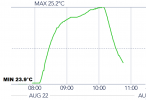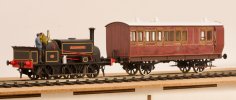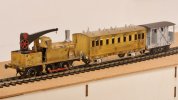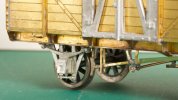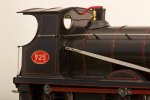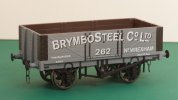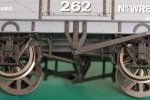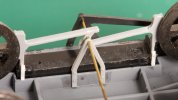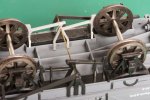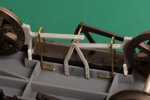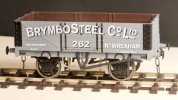Richard Gawler
Western Thunderer
At the moment I am driving the bulbs with 7V DC and they are drawing 90 mA i.e. 30 mA per bulb. I am awaiting the arrival of a high frequency lighting unit (a Gaugemaster HF-3) and hoping this will achieve a similar brightness.
Not a chance. The HF-3 gets the filaments to glow so I can see their wiggly outlines; no chance of any illumination.
I hope the foregoing assessments of 12V bulbs are not viewed as a waste, but I have replaced the three 12V bulbs wired in parallel with three 3V bulbs (supplied with the HF-3) wired in series. And finally, I have my result.
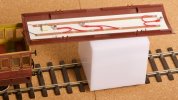
The lighting circuit gains a capacitor (top left) to pass the high frequency (AC) lighting supply but block the DC train control. Very old skool tech but it seems to fit with the light railway, one engine in steam sort of model railway. However many coaches I go on to build, their lighting fittings will cost pennies.
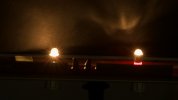
The flare shows good colour and even the over-exposed bulbs look like the colour of a mantle in an oil lamp!
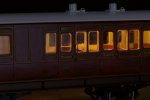
And this is the best rendition of the interior colours I have managed so far.
The dangly red wire is annoying but I can sort this out another day when I add some passengers and a guard.
I cannot include figures for volts or amps here because the frequency of the Gaugemaster lighting supply seems to be higher than what my multimeter perceives to be alternating current. The only numbers are, the capacitor is marked 0.47 µF, and the new bulbs are rated at 3V each.

